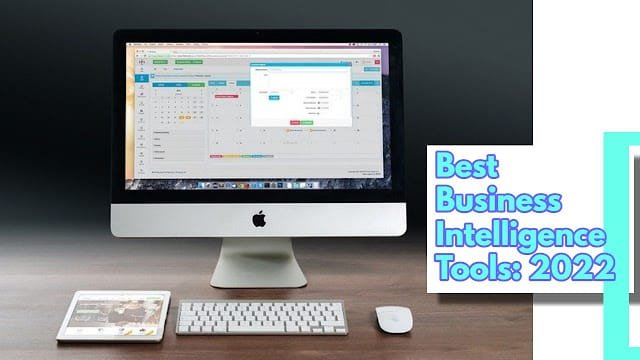Article by Eshani Jain.
Revenue is the income that an organization earns by selling its product or service. Revenue can be generated by a firm from numerous sources in the form of rent, commission, transaction fees, arbitrage, markup, service revenue, product revenue, consulting, brokerage fee, interest, dividend revenue, etc.
Generally, revenue streams are categorized into 4 types which are as follows:
- Transaction based Revenue: Revenue earned by one-time sale of goods
- Service Revenue: Earnings generated by providing service to a customer and the customer pays for the time or expertise offered
- Project Revenue: Earnings through a one-time project with a new or existing customer
- Recurring Revenue: Revenue that is likely to be generated regularly for some time
What is Revenue Model?
A revenue model is a conceptual framework for generating financial income. It states and explains the revenue earning strategies of the business.

A revenue model identifies the source of revenue to be pursued, the value to be offered, how to price the value offered, and who is target customer to whom the value is meant to be offered. The main objective of the model is to identify what product and/or service will be created to generate revenue and how it will be sold.
It is the key component of a business model and impacts all parts of a business may it be sales, operations, or finance. A revenue model is important for the future of a company as without a clear and well-planned route for generating revenue a firm might struggle and be unable to manage its costs.
Therefore, having a revenue model allows a business to focus on its target customers, develop marketing plans and find efficient ways of generating capital and having a wrong revenue model can be huge mistake for your business.
Side Note: Keep in mind that revenue model deals only with how to generate business revenue. It does not deal with how to manage business finances.
Difference between Revenue Model and Business Model
A revenue model is a part of the business model. The focus of the business model is on how it will generate value and that of the revenue model is how it will generate revenue from the value offered to the market.
A business model outlines how a business will create value meant to be delivered to the customers whereas, the revenue model outlines how it will charge for the value.
Types of Revenue model

There are various types of revenue models out there in the business world that might suit the best for your organization and help you in planning how you generate your revenue.
Related Read: How to Get Funding for Your Startup in India
I have listed down a few of the most popular types of revenue models out of the plethora of them from which one can choose. They are as follows:
#1. Markup Revenue Model
Markup is the difference between a product’s selling price and cost price that is expressed as a percentage of the cost price. The seller adds the markup to the cost price to earn a profit on his product or service.
This revenue model is generally used by wholesalers and retailers but lately, it is also being adopted by e-commerce marketplaces that act as mediators.
The model is extremely simple and does exactly what the name suggests, the businesses who adopt this revenue model just add a markup to the value offered by them to generate revenue. The revenue model has been in use for ages and is extremely common to date. It has a few advantages and disadvantages as well which are:
- Advantages: It is the most suitable model for a business dealing with a variety of products as it makes the practice of pricing easy and efficient otherwise one has to haul for hours pricing the products individually.
- Disadvantages: It can lead to loss of profits as at times a product is capable of fetching a higher market price, but the opportunity might be lost due to markup pricing.
Example: A retail furniture shop buys furniture from a wholesaler for $400 and then sells it to customers for $500. The profit of $100 leads to a markup of 25%.
Recommended: Read our 2023 analysis of the markup revenue model.
#2. Advertising Revenue Model
In this form of revenue model, a company generates income by selling ad space. The advertising model is generally adopted by media houses, information providers, and social media sites like Google, Facebook, Yahoo, Twitter, etc.
The model offers a wide scope for innovation and creativity, organizations using this model advertise in a plethora of ways such as by using display ads, search ads, audio and video ads, recruitment ads, featured listings, etc. according to the purpose and value offered by the organization.
They create ads and place them on strategic and high viewership channels to generate revenue. The advantages and disadvantages of the model are as follows:
- Advantages: It is an effortless way of generating revenue as there is a large market of potential customers and a platform with high and loyal followers can charge a higher rate for ad space as compared to the market rate. That is why various businesses opt for it as a revenue model.
- Disadvantages: The clickthrough rates of advertising campaigns are generally low leading to low revenues. To generate higher revenue the business needs to get hold of a large number of followers which isn’t a very simple task. Also having this as the only revenue model can be very risky as people generally find ads infuriating and so they might just ignore them creating uncertainty of revenue.
Example: Google AdSense
#3. Arbitrage Revenue Model
Arbitrage is a revenue model that makes use of the price difference of a product across two markets. It is a money-making strategy being used for ages.
It is considered to be a theoretically risk-free practice. In this model, a person buys a commodity, currency, or financial instrument in one market and at the same time sells it in another market at a higher price to benefit from the temporary price difference.
It can take place across markets of the same commodity only. It is important for both the activities to take place within an extremely smalltime gap to realize the benefit. The various advantages and disadvantages of the model are:
- Advantages: It has almost zero risks and helps in stabilizing the prices of securities across markets thus reducing fluctuation.
- Disadvantages: The scope of benefiting from arbitrage is minimal since there are very few real-life opportunities of the same and if there is an opportunity one must have access to the latest technology. Also, it is the most unpredictable revenue model. It is only theoretically risk-free as it carries a high risk in the real world.
Example: Benefiting from the difference in prices of financial instruments across different markets by selling the instrument in the market with a higher price and buying the same in the market having a lower price.
#4. Commission Revenue Model
It is a form of transactional revenue model in which a business or person charges a fee or commission for every transaction or action mediated by him in a deal or transaction between two companies. The model is most common amongst online marketplaces that provide a platform for selling goods, brokers, auctioneers, independent music distributors, etc.
They charge commission either as a percentage on the price of the product sold or as a flat fee.

This revenue model can be used by any company that provides a service as an intermediary. Various advantages and disadvantages of the same are as follows:
- Advantages: It is deemed to be a very lucrative revenue model as the businesses which adopt this model get a piece of all the value that passes through their platform. Also, it is one of the simplest and straightforward revenue models.
- Disadvantages: The biggest challenge faced by adopting this model is that the business needs to take care of creating enough value for both the providers and the customers or else they will find another company offering them similar services as the environment is highly competitive. Also, they are difficult to scale if the product you deal with is not driving sales.
Example:
- Uber, eBay, Airbnb, and many other online marketplaces use this model.
- A realtor charging a fee on the sale of a property made by him.
#5. Licensing Revenue Model
In this revenue model, a business that retains its copyrights sells its license to another party, allowing it to use its product, technology, or property.
It is a detailed agreement that specifies the period for which the party can use the property, the geographical regions where it can be used, and the royalty fee terms. There are two ways in which a company can generate revenue in this model; one is by charging the licensor for the usage or by charging him on the revenue generated.
One should opt for the method of charging on usage if the licensor is in a different business line than the licensee, the licensor can charge him either in form of a fixed usage fee or on basis of consumption.
Charging based on revenue generated should be opted for when the licensor and licensee are in the same business line. The revenue model is considered to be very lucrative amongst various industries like software development, content creation, etc. The various advantages and disadvantages of the model are:
- Advantages: It is a method by which a business can earn passive income if it owns any intellectual property. Also, the risk of both the parties involved is very low as there is no party’s money at stake.
- Disadvantages: Many a time licensee become a competition in the licensor’s marketplace making it difficult for them to survive.
Example: Licensing of intellectual property
#6. Subscription Revenue Model
In a subscription model, a business charges a pre-determined amount from the customer in recurring periods for the value offered by him in the form of a product or service. Even if the customer does not use the product after entering the contract, yet he will have to pay until the contract is terminated or expires.
Related Read: A Deep Dive Explainer on Smart Contracts
The subscription model has become an exceedingly popular and common model because of its high versatility and is being used by gyms, magazines, newspapers, members’ clubs, and online streaming apps. This model allows the business to serve all kinds of customers sets and their needs by offering various subscription models of different prices and features so that one can choose as per his requirements.
A few advantages and disadvantages of this model are as follows:
- Advantages: It is an attractive model for customers as it offers a variety of value options.The recurring payments offer predictable revenue for the business.
- Disadvantages: Having a high subscriber rate is the lifeline of this revenue model which is a difficult task to maintain, making it difficult for the business to survive in a very competitive environment.
Example: Tri-monthly or yearly payments charged by Netflix
#7. Rental or Leasing Revenue Model
In a rental agreement, payment is made for temporary usage of goods, services, or property owned by another person. In a leasing agreement, three parties the seller, the buyer (lessee), and the lessor (financer) are part of the agreement. In this agreement, the lessor buys the product or property on behalf of the lessee from the seller and then leases the same to the lessee for a periodic payment. These agreements are generally made for costly physical goods like medical equipment and devices, manufacturing, and capital equipment, etc. These agreements are common to the markets of clean technology and medical instruments.
- Advantages: The lessor gets periodic payments making it a constant source of revenue and can enjoy various tax benefits such as depreciation, investment allowance, etc.
- Disadvantages: The lessor has to bear the risk of obsolescence which has become quite high in the rapidly changing technological environment. The leasing market has become extremely competitive in the past few years making it difficult for the lessor to obtain leasing agreements.
Examples: Hiring a car for self-driving via Zoomcar.
#8. Affiliate Revenue Model

This new and sought-after model works by promoting referral links of products that befit your website. The business charges a commission of the subsequent sale of those products.
The amount of commission that the business charges can be based on a pre-fixed value for each visit (pay-per-click), registration, or on every purchase made (pay-per-sale).
The many benefits and a few disadvantages of this model to the affiliate can be as follows:
- Advantages: Starting an affiliate marketing website is an amazingly simple task and there are no restrictions for entering into the industry. The investment costs are quite low and can easily be worked upon as a side business to earn an additional income. The affiliate doesn’t need to worry about book-keeping and customer relations as his only job is to promote the product.
- Disadvantages: There is no guarantee of generating revenue if the product you choose to sell is of a highly competitive market.
Example: Every Day Carry and Gear Patrol of Amazon.
#9. Data Sales Model

It is a revenue model whose core is data. The businesses that adopt this model are data-driven. They collect data according to the needs and requirements of their customers and business customers then sell this data for a price.
In the modern world, data is used in order to target customers or audiences who are likely to convert. It is used by businesses to target customers via data analytics or even to convert an audience to email subscribers.
This revenue model is gaining high traction. It is adopted by various companies as a side revenue model. The various advantages and disadvantages of this model are:
- Advantages: Data collected about a specific field can be sold to many companies that serve as customers.
- Disadvantages: Collecting data is a tedious task and as every business requires a fresh database it becomes incredibly challenging.
Example: Thomson Financial, Bloomberg, etc.
#10. Fee-for-Service Revenue Model
In this revenue model, a business or an individual charges for the services provided by him to the customer. The customer is charged only if the service is used by him, unlike that in a subscription model where the customer has to pay regardless of using the service if he has entered into a contract with the organization.
The model is also popularly known as Pay per User revenue model. Not only service industries but also information technology (IT) industries and the medical sector adopt this model.
Advantages and disadvantages associated with this model are as follows:
- Advantages: The major benefit of the model is that the revenues start flowing in once a deal is closed and various industries can easily adopt it is a side revenue model in their ongoing businesses.
- Disadvantages: This model depends highly upon customer satisfaction, so the business needs to be aware of the similar market services being offered in order to deliver the best product/service to its customer and meet their needs.
Example: charging consultancy fee, customer support fee, etc.
#11. Transactional Revenue Model

It is a revenue model that depends upon the sale of goods or services of the business for generating revenue. It is used by numerous industries including tech industries, consumer product industries, service provides, etc. as it is a very direct way of earning revenue.
The model is way less attractive as a company always has to do something in order to make a sale for example: If it’s a physical product company then it will have to produce the product and make it available in the market each time it makes a sale.
Advantages and disadvantages of adopting this model are as follows:
- Advantages: The sales are straightforward and uncomplicated. Transactional marketing has a low promotional cost and is highly scalable. Also, it provides a wide range of options thus, attracting more customers.
- Disadvantages: Due to high market competition and price deterioration the business can start losing its profits.
Example: Toothpaste companies, e-commerce companies, etc.
#12. Freemium Revenue Model

As the name suggests it is a combination of free and premium. The companies which adopt this revenue model offer two versions of their product one is free and the other is accessible for a price.
The free product is the basic version whereas the premium one comes along with additional features, extensions, and functions. The model is most suitable for web-based service companies having a huge customer base and who offer ongoing value to their customers.
To make a freemium revenue model successful, the business must focus on delivering the best customer experience.
Advantages and disadvantages of adopting this model are as follows:
- Advantages: By offering free versions of the product the company can introduce itself and its product to potential customers in the market. Also, there are low entry barriers.
- Disadvantages: The product should offer enough value to the customers that they are compelled to shift to the premium version otherwise the model is not sustainable for the business. Creating value that attracts customers to pay is a tough challenge in an extremely competitive market.
Example: Software companies introducing two versions of Anti-virus software, LinkedIn, Flickr, etc.
How to Choose a Revenue Model?
Having a perfect product or service to offer is not enough for a business to become a success. One needs to identify a revenue model that suits his business idea and adopt it to make the business a profitable venture in the long run.
A revenue model allows you to explore the growth potential of your business and the extent to which it is scalable. Experimenting and testing with different revenue models allow you to explore the scope of your business beyond traditional lines and find the optimal revenue model for your business.
To choose the ideal revenue model for your business, you must keep the following points in mind:
- Forecasting your revenue estimates helps you in understanding the revenue model that your business requires. Two approaches that you can employ for forecasting are top-down and bottom-up forecasting.
- The revenue model you choose must befit your company’s purpose and approach.
- Revenue models keep on evolving so the business must continuously re-define and refine its model.
- The revenue model you employ should allow you to communicate the value you offer.
- Finding investors that are acquainted with your revenue model is a cherry on the top as they are not involved only for short term profits but for realizing the return on investment in the long term.
- Understand your business and all the variables that might have an impact on your revenue model then choose the one that allows you to perform your best.
That’s all. If you liked this article, do give it a share and if you have any questions, let me know down in the comments!
Read Next
- How Digital Marketing can Help Boost Your Business
- All You Need to Know about Bootstrapping Your Business
- 7 Influencer Marketing Campaigns to Inspire Your Next Marketing Campaign
Sign up to our Exclusive Newsletter for Free!
Author Bio: Eshani Jain, the author of this article is a student of Bachelor of Commerce (Hons) at Kamala Nehru College, DU. She is currently interning at WinSavvy. Connect with her on LinkedIn.





















